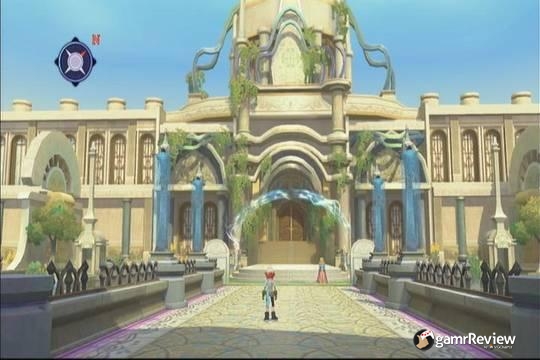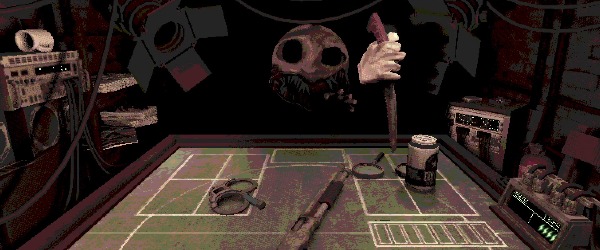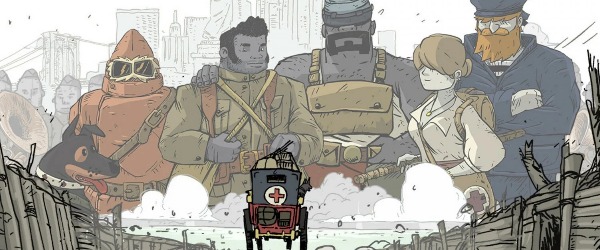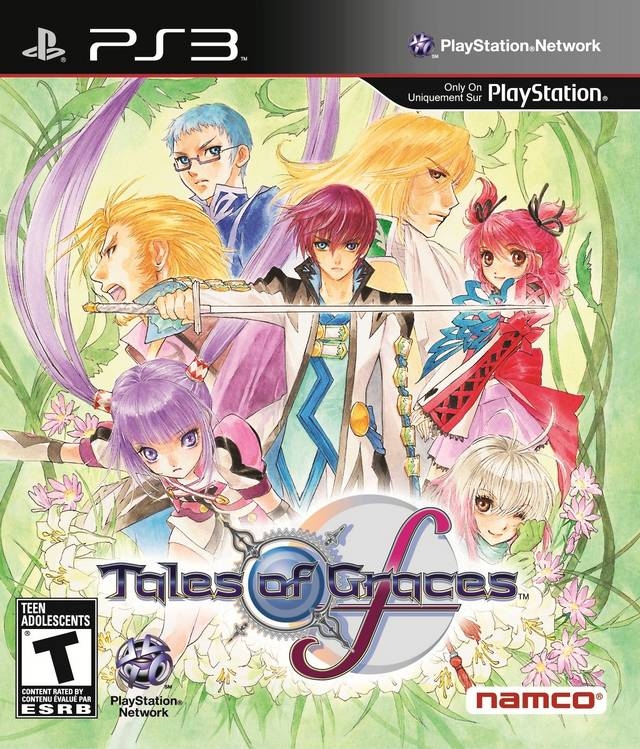
Tales of Graces f - Review
by Karl Koebke , posted on 26 March 2012 / 8,252 ViewsIt's been more than 2 years since the Japanese Wii release, but Tales of Graces has finally made it to the West in the form of Tales of Graces f for the PS3. It's odd that a late port with added content - and on another platform, no less - is the only version of the game to make it here, and some Wii fans have been understandably upset. But was it worth the wait; did Wii-only owners actually miss out on something special?
While overall the story of Tales of Graces f is kind of mundane it does have a unique start at least, introducing you to younger (think 10-11, instead of the JRPG standard of 16-19) versions of the main characters; it's great to actually play the backstory for a game, instead of just being told about it, and the younger years help establish the relationships between the key players. Once that's established you skip forward 6 years or so, and here the real story begins. Your little band of kids have all gone their separate ways, but they'll slowly reconcile and obtain a few more members to boot. There's a bit of betrayal, some well telegraphed intrigue, and before long you're all off on a world-saving, globe-trotting adventure. When it comes to more mature elements of storytelling, I actually thought that the epilogue (an added extra for Tales of Graces f) was more successful than the main game. It delves deeper into themes of mortality, which was somewhat interesting, but the issue is unfortunately resolved with a clichéd “we'll just have to stay alive in the hearts of our loved ones” send-off, so it isn't like Tales is stepping into Persona territory.
 Yeah, Pascal, that was my reaction too
Yeah, Pascal, that was my reaction too
Skits are what really make Tales stories unique and enjoyable. When you're walking around on your adventure you'll sometimes be prompted to press the select button, which will allow your characters to talk about the current situation amongst themselves for a short while. Some of these will just give further explanation of what's going on, but the best ones are more light-hearted; a handful are even pretty hilarious. Sophie's deadpan and naïve take on things is particularly enjoyable, but all of the characters are actually good for some laughs and the voice acting works well for these parts. Thankfully, all of these skits are fully voiced - the silent side missions are proof that the skits would be far less enjoyable if they weren't.
So the story is good for some laughs, but not too much else. But that's not what Tales games are about anyway; as any fan will tell you the combat is key, and Tales of Graces certainly has a great combat system. Everything is real time, so you can move back and forth from your target, but you don't really have any way to free run around the battlefield. Instead, you can perform very quick dodges a short distance in all directions while blocking, but each dodge will cost you some CC, which is also used for your attacks as well. This means that you can't just dodge like crazy - you have to use it when it counts - an idea which is further emphasized by dodges actually gaining you CC if you can time them well enough.
Eventually you'll have to stop dodging and do some damage yourself, and that's where artes come into play. Tales of Graces f divides artes into two simple types, A-artes and B-artes. A-artes utilise the X button and are usually faster, weapon-based attacks, while B-artes use the circle button and are often magical or ranged in nature. You can choose from four different artes of each type based on the direction of the analog stick when you press the button, and the A-artes are chained with different attacks taking advantage of different enemy weaknesses. So if you're trying to hit all of your enemies' weaknesses it can take a bit of planning and pattern memorization. Luckily, if you don't want to bother with it, weaknesses don't seem to have a huge impact on the outcome of a battle.
What I really like about Tales of Graces f is that even though every character has the same basic controls they all feel different to use, and you can choose to play as any of them. It's easiest to use Asbel, since he has fast melee attacks for both A and B-artes which helps when enemies are weak against one or the other, but it can be fun to play around with the other characters to see how they handle. A couple of the casters play pretty similarly, with weapons designed just to help them keep a distance, but other casters, like Richard, actually get a casting speed bonus if they can use the spell as part of a melee combination. Regardless of who you play as, enemies will often come with weaknesses to either A or B-artes, so you'll have to switch things up if you want to finish off your enemies efficiently. The epilogue included in Tales of Graces f adds a further layer onto this by including a Reflex meter, which fills up over time and can be used with different effects for different characters. Examples are Cheria's, which stops time for your enemies and lets you get out of a tight spot, and Hubert's rain of arrows, which can continue your combo count while you pause from attacking.
The battle system also rewards you for going above and beyond. Building up a large combo will steadily increase the damage you do each hit, and if you can hit all of your enemies' weaknesses in a single combo you'll also get a bonus. Completing certain objectives during a fight can also net you bonus experience, money, or health, and if you complete one goal the next fight will challenge you to take it a step further, so if you beat one enemy in 15 seconds the next time around you'll be challenged you to do it in 12 to earn your bonus. This also shows off one of the problems with the battle system, which is that most fights are over before you know it and you don't really get a chance to play around with the intricacies of the battle system, but this becomes less of an issue as you progress.
Outside of battle there's some exploration to be had, but not much. You aren't going to be running through sprawling wilderness ala Xenoblade, but for the most part you can choose which roads to go down and which towns to visit, and most paths have at least a couple of little nooks and crannies to explore. That is, of course, providing you aren't being directed in one specific direction by invisible walls and characters saying "don't have to go there now". I don't think it's anathema to do this every now and then, but it gets irritating if it doesn't make sense (for example if you enter a new dungeon and can't go through the left door because "that's the wrong way", when your character couldn't possibly know that without at least trying it).
When you're exploring the world you'll notice that the game looks pleasant, but it's fairly obvious that it was a port from another system. Lip syncing isn't even close to accurate, and animations in general (outside of combat) sometimes look off, particularly with respect to walking NPCs. It's not a bad looking game by any means, but it's not going to impress anybody.

There are some pretty nice places to visit when the game lets you
The "f" in Tales of Graces f signals that the title has some added content. It took around 40 hours to get through the main storyline, and after that there's an epilogue of sorts which adds a further 10 hours of game time. After that, you'll still have lots of side missions to complete, a single combatant arena to try our your skills in, an optional dungeon to explore, and exhibition fights which can be particularly difficult and unique. The genre-standard New Game+ and multiple difficulty levels also make an appearance, with the difficulty levels being more noteworthy than in other games thanks to the stellar battle system. If the storyline were better, I'd call this one of the best value propositions in the genre, but as is it's still more than worth the asking price.
It's not quite a masterwork of Japanese development, but I don't think anyone should be dissappointed by what Tales of Graces f has to offer. The added content makes for a total of 50 hours of storyline, along with a large amount of side content; the battle system is sublime when you have the time to play around in it; and the skits are almost always enjoyable and sometimes even hilarious. If you're a fan of the genre you should definitely pick this one up, if for no other reason than to show Namco that we aren't all a bunch of hypocritical ingrates who just whine about localization for the fun of it.
This review is based on a retail copy of Tales of Graces f for the PlayStation 3.
VGChartz Verdict
8
Great


























